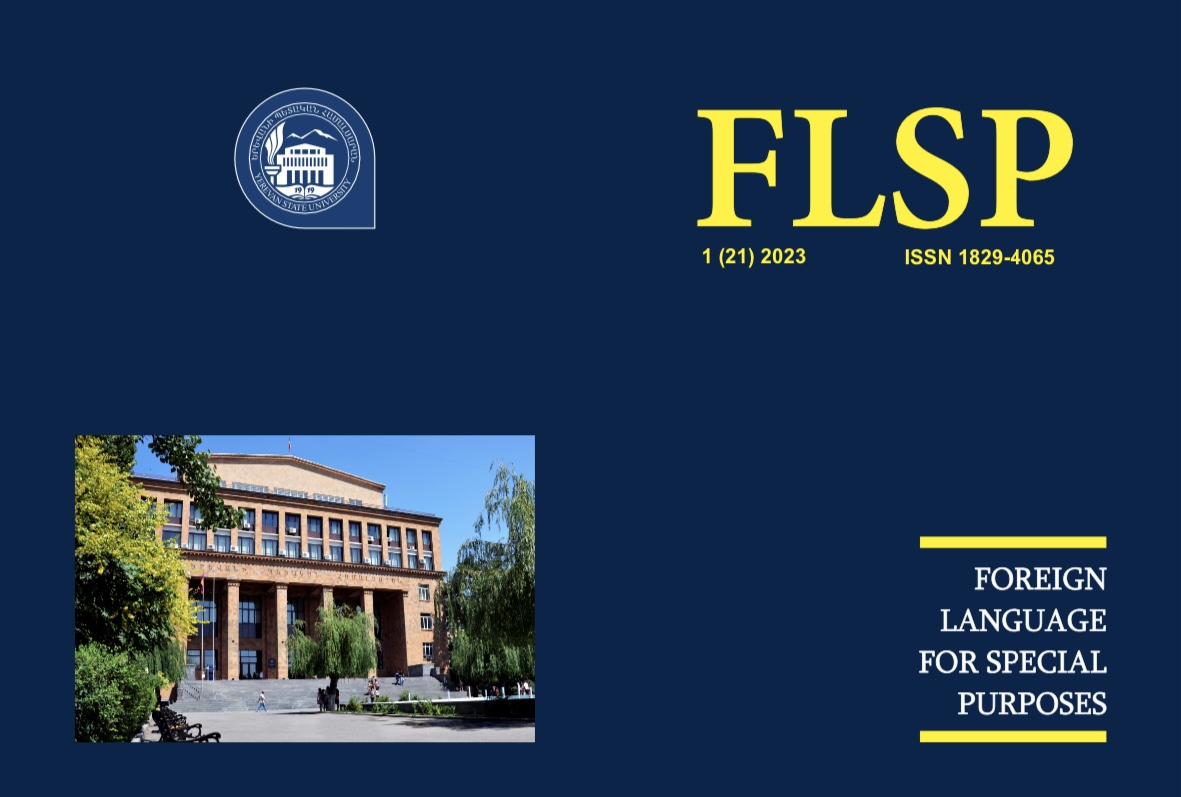TOPICALIZING LANGUAGE LEARNING IN ESL CLASSES
DOI:
https://doi.org/10.46991/flsp.v2i22.11514Keywords:
լեզվի ժանրային առանձնահատկութուն, շարահյուսական կառույցներ, անգլերենը հատուկ նպատակների համար, անգլերենը ակադեմիական նպատակների համարAbstract
Հոդվածում նկարագրվում է կրթական նյութի արդյունավետ թեմատիկացման և լեզվի ուսուցման գործընթացում ուսանողնորին մոտիվացնելու ռազմավարություն՝ հատուկ շեշտադրելով Անգլերենը հատուկ նպատակների համար դասերի ուսումնական նյութերի առանցքային դերը։ Ենթադրվում է, որ բարձր մասնագիտացված ոլորտների բարդ տեքստերի ինտեգրումը կարող է ծառայել երկակի նպատակի՝ հեշտացնել լեզուների ուսուցումը, միևնույն ժամանակ խթանելով մասնագիտական թեմաների վերաբերյալ բովանդակալից քննարկումներ։
Վ․ Հայզենվերի «Ֆիզիկա և փիլիսոփայություն․ հեղափոխություն ժամանակակից գիտության մեջ» աշխատությունից հատվածների հիման վրա ցույց է տրված, որ այս տարրերը միավորելով՝ դասավանդողները կարող են ստեղծել ուսումնական միջավայր, որը ոչ միայն լեզվական հմտություններ կսերմանի, այլ նաև կխթանի ուսանողների ոգևորությունը ընտրած բնագավառի նկատմամբ։
References
Dudley-Evans and St. John “Developments in English for Specific Purposes. A multi-disciplinary Approach”, Cambridge University Press, 15th ed., 2012.
Heisenberg W., “Physics and Philosophy. The Revolution in Modern Science”, New York, 1958.
Hutchinson, T. and Waters, “English for specific purposes: A learning-centered approach”, Cambridge: Cambridge University Press, 1987
Samraj, B. (2004) Discourse features of the student - produced academic research paper: Variations across disciplinary courses // Journal of English for Academic Purposes 3:5– 22.
Swales, John M., “Genre Analysis. English in Academic and Research Settings”, Cambridge University Press, 2008
Swales, John and Ch.B. Feak “Academic English for Graduate Students. Essential Tasks and Skills”, Michigan University Press, 3 ed., 2012
Downloads
Published
Issue
Section
License
Copyright (c) 2023 Ruzanna Karapetyan

This work is licensed under a Creative Commons Attribution-NonCommercial 4.0 International License.
Creative Commons Attribution-Non-Commercial (CC BY-NC). CC BY-NC allows users to copy and distribute the article, provided this is not done for commercial purposes. The users may adapt – remix, transform, and build upon the material giving appropriate credit, providing a link to the license. The full details of the license are available at https://creativecommons.org/licenses/by-nc/4.0/

